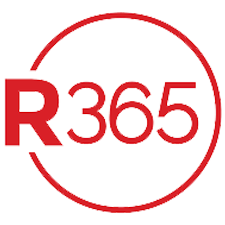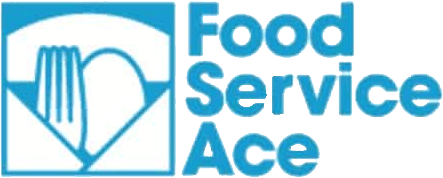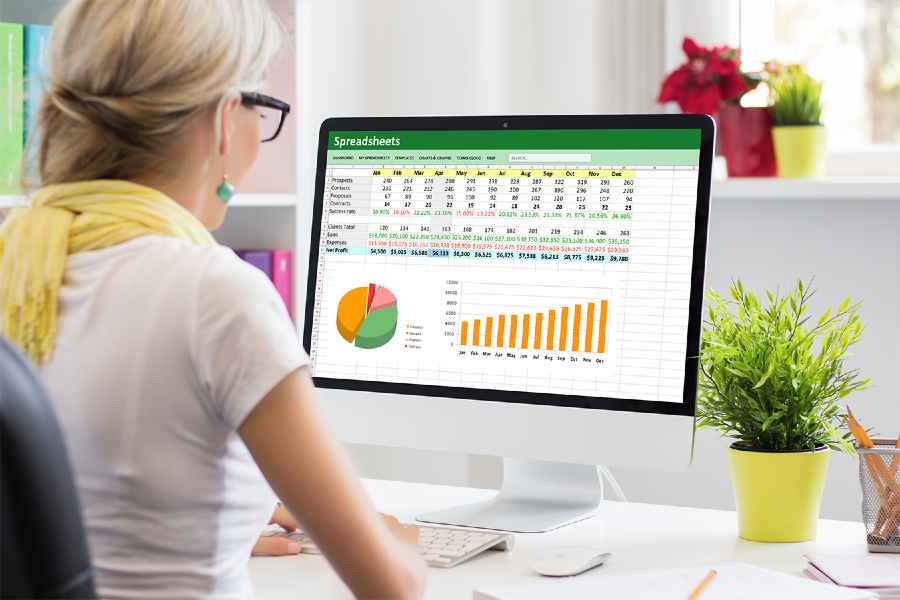The best restaurant accounting software must address the majority, if not all, of the components of restaurant operations and back-office management—such as accounting, inventory checking, cost management, and employee scheduling. That will help managers and owners track the financial aspect of the business without having to transfer to and from different software.
We’ve evaluated the five best restaurant accounting and bookkeeping software for managing your business:
- Restaurant365: Best overall accounting software for restaurants
- QuickBooks Online: Best for small restaurants, cafes, and startups
- MarginEdge: Best for restaurants with bars
- Wave: Best free accounting software for food trucks and carts
- Food Service Ace: Best for caterers
Best Restaurant Accounting Software Compared
Monthly Pricing | Our Score for Accounting Features | Recipe or Food Management | Employee Scheduling | Point-of-sale (POS) Integration | |
|---|---|---|---|---|---|
 | 4.5 of 5.0 | ✓ | ✓ | ✓ | |
$99 | 5.0 of 5.0 | ✕ | ✕ | ✓ | |
 | $330 + $99 for QBO | 5.0 of 5.0 | ✓ | ✕ | ✓ |
 | Free | 2.5 of 5.0 | ✕ | ✕ | ✕ |
 | Custom | 3.5 of 5.0 | ✓ | ✕ | ✓ |
Which Restaurant Accounting Software is Right for You?
Restaurant365: Best Overall Restaurant Accounting Software

Pros
- Tracks income and expenses separately by location
- Offers integrated payroll and HR
- Provides assistance finding R365 Certified Accounting Partner
- Provides projections for staffing and food requirements via sales forecasting based on past data
- Manages restaurant fixed assets
Cons
- Lacks monthly billing
- Won’t let caterers track project profitability
- Offers employee scheduling only in the Professional plan
- Is expensive for restaurants with many small locations
Restaurant365 bills by the quarter. Listed below is the cost per quarter, as well as its monthly cost for comparison.
- Essential: $1,407 per quarter ($469 per month) per location
- Professional: $2,067 per quarter ($689 per month) per location
- Custom: Custom priced based on your needs
You’ll need to schedule a free demo with a sales representative before purchasing your subscription.
While expensive compared with general-use bookkeeping software, we think Restaurant365 is a great value because of its built-in restaurant management features. You won’t spend time on manual worksheets and importing and exporting data with this all-in-one solution for restaurants.
It features a lot of functions that can help restaurants manage operations. From ingredient sourcing to the customer’s table, it provides you with a full view of everything happening in the kitchen or on the floor. Aside from restaurant management, users have a full view of restaurant finances from budgeting to financial reporting.
We gave Restaurant365 a perfect score for restaurant features because it covers all things we want to see in a restaurant accounting software, such as employee scheduling, recipe costing, integrations with popular POS systems, and EDI Electronic Data Interchange with vendors.
It also has outstanding accounting features. However, it doesn’t automatically calculate sales tax, so you’ll want to choose a POS system with that capability. If your restaurant is so small that you don’t intend to use a modern POS system, then you’ll be better off with a general-use software like QuickBooks.
Because Restaurant365 is priced per location, restaurants with multiple small locations might find it expensive—especially since payments are on a quarterly basis. More locations mean a more expensive quarterly subscription commitment.
A more affordable alternative would be MarginEdge plus QuickBooks Online Plus. MarginEdge is $330 per month, while QuickBooks Online Plus is $99 a month, which brings us to a total monthly cost of $429 for unlimited locations—less than what Restaurant365 charges for a single location.
QuickBooks Online: Best for Small Restaurants, Cafes & Startups

Pros
- Is very affordable compared with restaurant-specific software
- Integrates with all of our best restaurant POS systems
- Has excellent project accounting for caterers
- Lets you instantly share your books with an external accountant
- Tracks classes and locations separately
Cons
- Lacks recipe costing
- Doesn’t provide assistance with employee scheduling
- Has no assistance purchasing food with EDI
- Lacks restaurant management features in general
QuickBooks Online has four plans. For restaurants, we recommend Plus, which includes bill management and inventory project, location, and class tracking.
- Simple Start: $35 per month for one user
- Essentials: $65 per month for three users
- Plus (recommended for most restaurants): $99 per month for five users
- Advanced: $235 per month for 25 users
When subscribing for the first time, you have the option between a free 30-day trial and 50% discount for the three months.
As our best small business accounting software, QuickBooks Online is a flexible pick for smaller restaurants, cafes, bistros, and startups. QuickBooks has everything you need to pay your bills, track your costs, and produce quality financial statements. It can track income and expenses by project, location, and class.
For instance, you can easily produce reports separating activity by alcohol, food, and catering across multiple locations. Or, you can use project tracking to measure the profitability of individual catering jobs or special events.
QuickBooks won’t help manage your restaurant, but it will integrate with most restaurant POS systems that offer helpful restaurant features. You could set up recipes as inventory build items and track your raw materials being turned into dishes, but that would be terribly inefficient. If you like QuickBooks’ flexible accounting features—but also want restaurant features—we recommend integrating QuickBooks Online with MarginEdge.
QuickBooks Online aced our rubric for accounting features but only got a 2.5 for restaurant features. While it won’t help determine the cost of recipes, schedule your employees, or provide EDI with your vendors, it does offer integrations with many great POS systems. For instance, it integrates with Toast POS, which can be used to schedule employees.
One of the things we like most about QuickBooks is how easy it is to find help. In addition to its own bookkeeping service, QuickBooks Live, there is a huge network of ProAdvisors—making it easy to find a QuickBooks ProAdvisor in your area. Most bookkeepers and accountants in the US are familiar with QuickBooks.
MarginEdge: Best for Restaurants With Bars

Pros
- Integrates with QuickBooks Desktop, QuickBooks Online, Sage Intacct, and Xero for general bookkeeping
- Measures alcohol poured with Freepour smart scale
- Compares actual ingredient usage with what should have been used given the dishes sold
- Has straightforward pricing
Cons
- Requires users to pay for bookkeeping software, e.g., QuickBooks Online
- Has no employee scheduling
- Cannot forecast sales and food usage based on prior data
MarginEdge charges a monthly flat fee of $330 per location. However, you’ll also need to subscribe separately to a bookkeeping software—such as QuickBooks Online Plus for $99 per month.
You can add a Freepour smart scale for $150 per month to track your alcohol on hand for accurate alcohol cost and shrinkage.
MarginEdge is the perfect complement to QuickBooks Online for restaurants. It combines the outstanding accounting features of QuickBooks Online with powerful restaurant features like recipe costing and commissary kitchen support. While we recommend QuickBooks Online as your bookkeeping integration, there are other great software to choose from, such as Sage, Xero, AccountEdge, and Microsoft Dynamics GP.
A great new feature of MarginEdge is the Freepour smart scale for an additional $150 per month. Bar owners—as well as fans of Bar Rescue—know that overpouring by your bartenders can cost you serious cash. The Freepour smart scale allows you to inventory the alcohol left in your open bottles to calculate the actual alcohol poured in an evening and compare it with the theoretical alcohol poured based on sales.
We don’t recommend using MarginEdge without a bookkeeping integration, so we evaluated it while integrated with QuickBooks Online Plus. With the integration, MarginEdge scored perfectly for the accounting features we look for in restaurant accounting software.
It received better marks than QuickBooks Online alone for restaurant features, but not as good as Restaurant365. A few of the missing restaurant features include employee scheduling, sales forecasting, and EDI with vendors. MarginEdge scored great for customer service since it offers multiple contact methods—including phone, email, and live chat with a human.
Wave: Best Free Accounting Software for Food Trucks & Carts

Pros
- Is free for one user
- Offers unlimited users for $16 monthly
- Lets users connect bank and credit card accounts to transfer activity
- Is solid accounting software for tracking income and expenses
Cons
- Can’t track food-on-hand
- Can’t price recipes
- Has no tracking by class or location
- Starter: Free forever for one user
- Pro: $16 a month for one user, unlimited bank connections, and receipt capture via mobile app
Restaurant accounting software is most useful to track food on hand, recipe cost, and food waste. Not every food establishment needs these capabilities and will do quite well with simple software that tracks income and expenses for their tax return. Food trucks, carts, and other very small establishments have little food inventory, so they have little need to track it in detail.
Wave is very affordable and works much like QuickBooks for simple expense tracking. You can connect your bank account (with the Pro plan) and categorize your income and expenses as they are imported. If you have catering or larger jobs, you can send good-looking invoices and track them until paid.
Wave aced our rubric for pricing. It offers a free plan, but even its paid plan is only $16 per month and includes unlimited users. For comparison, QuickBooks Simple Start offers similar features for $35 per month for a single user.
Wave’s basic accounting features are solid, but it doesn’t have some of the more advanced accounting features sit-down restaurants might like, such as tracking inventory and separating activity by class and location. Check out QuickBooks Online if you don’t want to pay for restaurant features but need good inventory accounting.
Also, Wave lacks restaurant features, which is why we only recommend it for very small food establishments where the owner is personally involved and there is little food inventory. If you need restaurant features, we recommend going with Restaurant365.
Food Service Ace: Best for Caterers

Pros
- Includes foodservice distribution software that assists with deliveries to customers
- Has flexible plans based on your needs
- Manages inventory transfers between commissary and multiple food trucks
- Forecasts sales based on prior data and view required inventory purchases
- Lets you purchase food through EDI with vendors
- Integrates with third-party or Food Service Ace POS system
Cons
- Lacks upfront pricing
- Has no employee scheduling
- Has no payroll features
- Lacks accounting software integration
- Currently has no user reviews
Pricing is quote-based, payable monthly. The price includes data backup, unlimited users, and 24/7 access to a help desk.
We recommend Food Service Ace because of its comprehensive catering software. It helps you plan catering events by forecasting cash flows based on proposals, tracking deposits, organizing event workflow, and issuing final invoices. The other features are similar to those found in Restaurant365, but without any upfront pricing.
Food Service Ace scored poorly in pricing because it doesn’t provide any estimate of price on its website. At the very least, it could’ve enumerated the features in its custom pricing model to provide users with a general impression about its custom plan.
Its lack of accounting software integration is also something that we can’t overlook. Although Food Service Ace has built-in accounting features, we believe that access to other third-party software will give users more flexibility and better ease of use, especially for those who need advanced accounting features. MarginEdge is our top recommendation for restaurant software that integrates with accounting software like QuickBooks, Sage, and Xero.
How We Evaluated the Best Restaurant Bookkeeping Software
We evaluated the best restaurant bookkeeping software based on basic accounting features and reporting, as well as useful restaurant-specific functions. It’s extremely important that your accounting system integrates with your POS solution, so we evaluated whether the tool integrates with any of our choices for the best restaurant POS systems.
15% of Overall Score
Our pricing score not only includes the cost, but also whether month-to-month contracts are available and if there are any limitations on users, transactions, customers, or vendors.
25% of Overall Score
The general features include accounting features that all industries require, but the weights placed on features are specifically tailored to restaurants. Features particularly important for restaurants are payroll, inventory management, and bill management.
25% of Overall Score
The most heavily weighted restaurant feature is the number of good POS systems available for integration. Other features we considered are the ability to track multiple locations and update the cost of preparing recipes based on daily food prices, employee scheduling, sales forecasting, and EDI with vendors.
20% of Overall Score
Our ease of use score includes both a subjective evaluation by our accounting expert and the customer support options available. Finally, we consider whether the software has any accounting partners that can offer assisted bookkeeping services.
15% of Overall Score
In rating user reviews, we checked user reviews websites to gain user insights and suggestions. We believe that feedback from actual and verified users of the software gives us information about its usability for small businesses.
Frequently Asked Questions (FAQs)
The easiest and most convenient way to set up a restaurant accounting system is by hiring a professional accountant with experience in restaurant accounting. You can also get accounting software and modify it for restaurant accounting. Such modifications include adding unique accounts, like raw materials, labor, overhead, and other special income and expense accounts for restaurants—like food sales, food discounts, service fees, and delivery expenses.
Yes, Excel can be useful in preparing certain schedules for restaurants, but we highly recommend using bookkeeping software for tracking income and expenses for the easiest time.
The best way to account for restaurant expenses is to group them by cost components: direct materials, direct labor, and overhead. Direct materials are ingredients that your restaurant uses, like meat and vegetables, while direct labor consists of payroll of all employees. Finally, overhead costs are costs that can’t be traced directly to your products like electricity, use of condiments, and telecommunication expenses.
Bottom Line
Restaurant365 is a complete restaurant management and accounting software on a single platform. While it’s pricier compared with its competitors, it won’t disappoint in terms of restaurant management features. However, if budget is your concern, then MarginEdge plus a QuickBooks Online plan is the best choice for affordability. Food Service Ace is also worth considering if catering is a major component of your business.


